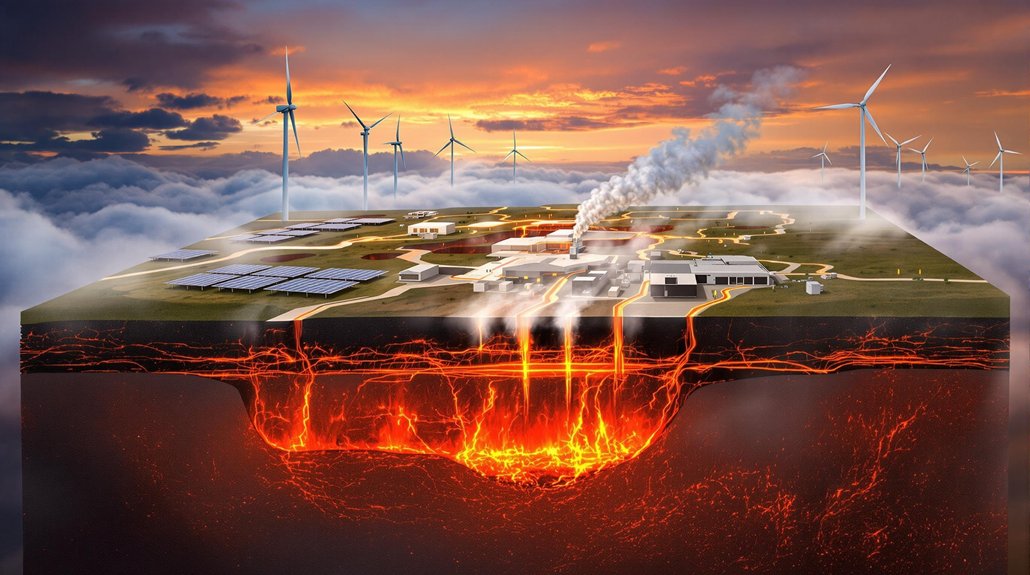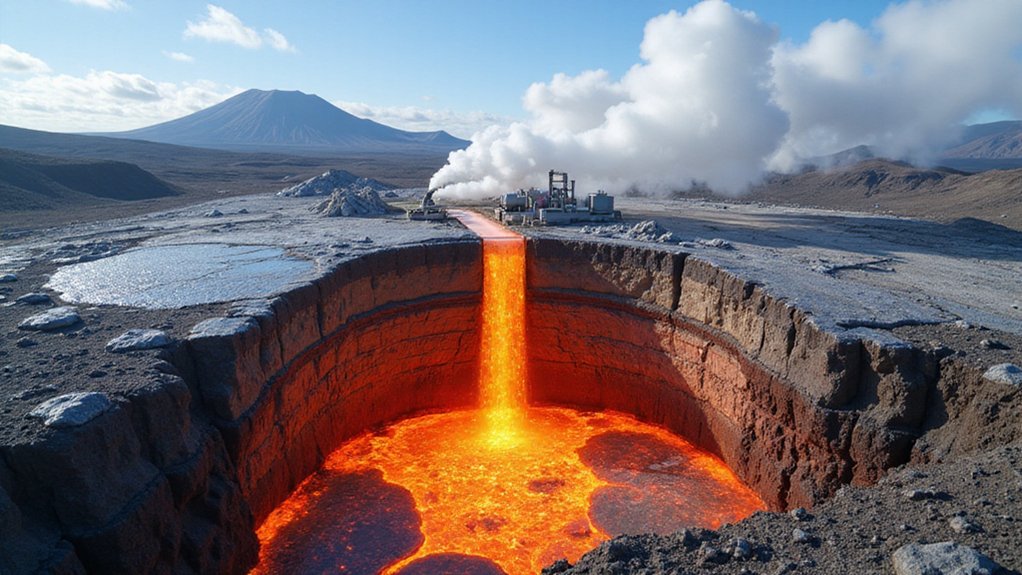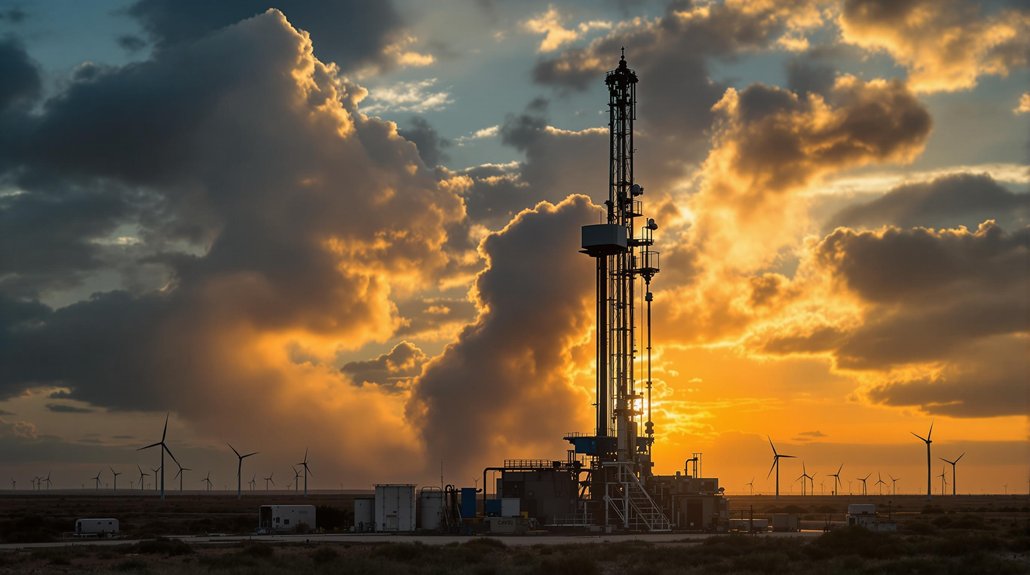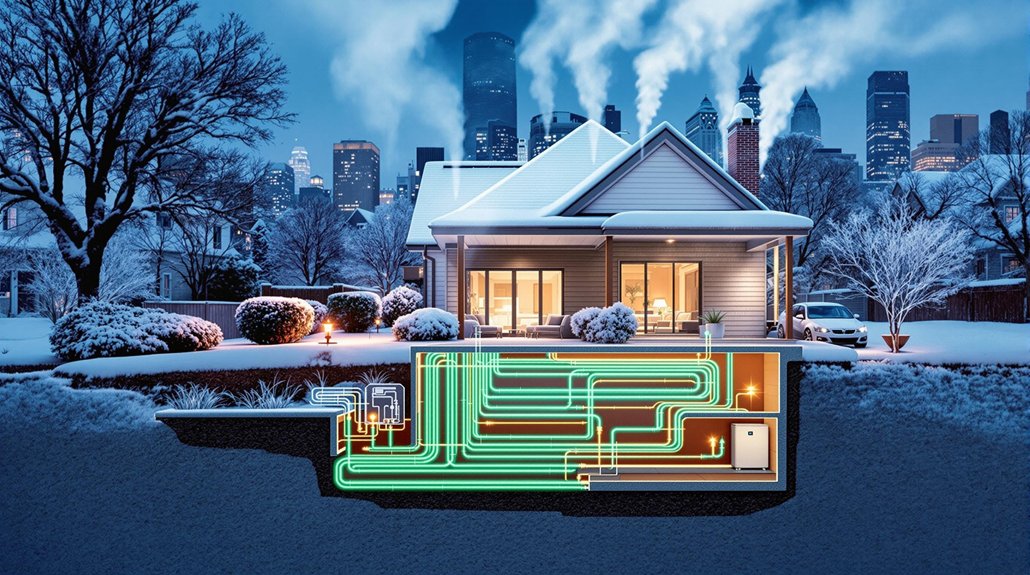As renewable energy solutions continue to expand across the global energy terrain, geothermal power offers unique advantages compared to its more widely deployed counterparts, solar and wind. Unlike solar panels that only work during daylight or wind turbines that need steady breezes, geothermal plants tap into Earth’s constant heat to generate electricity around the clock.
Geothermal plants deliver constant power by tapping Earth’s internal heat, unlike daylight-dependent solar or wind that requires steady breezes.
This steady power output gives geothermal energy impressive reliability numbers. While solar typically achieves 20-25% capacity factors and wind reaches 35-45%, geothermal plants often operate at a 70-90% capacity. This means they produce electricity much closer to their maximum potential than other renewables.
Weather doesn’t affect geothermal plants like it does solar and wind farms. A cloudy day or still air won’t interrupt geothermal power production. This consistency helps keep the electrical grid stable without needing backup power sources or large battery systems. Geothermal energy’s large rotating turbines provide essential system inertia that helps maintain grid stability during outages.
Despite these advantages, solar and wind have grown much faster. In the Western US over the past decade, solar added 20 gigawatts of capacity and wind added 5 gigawatts, while geothermal grew by less than half a gigawatt. The quick drop in solar and wind costs has driven their rapid expansion.
The economic picture is changing, though. Geothermal’s current cost of about $82 per megawatt-hour compares well with fossil fuels, which range from $70-117. As geothermal technology improves, experts expect these costs to drop further.
Geothermal plants also need less land than solar or wind farms to produce the same amount of electricity. All three options produce very low greenhouse gas emissions compared to fossil fuels. Geothermal facilities utilize closed-loop systems to further minimize their already small environmental footprint.
The value of geothermal power may increase as more variable renewables join the grid. When sunny and windy days create excess power, the value of additional solar and wind energy decreases. Geothermal’s steady, reliable output becomes more valuable in a grid with lots of intermittent resources. Although only 3.7 GW of the estimated 39 GW of resources have been developed in the United States, economic viability rather than resource availability remains the primary limiting factor.
References
- https://www.slb.com/resource-library/insights-articles/beyond-lcoe-what’s-the-true-value-of-geothermal-energy
- https://pangea.stanford.edu/ERE/pdf/IGAstandard/SGW/2013/Li.pdf
- https://www.thinkgeoenergy.com/berkeley-study-compares-the-net-value-of-geothermal-to-other-renewables/
- https://emp.lbl.gov/news/comparing-net-value-geothermal-wind
- https://www.nature.com/articles/s43247-024-01739-3








